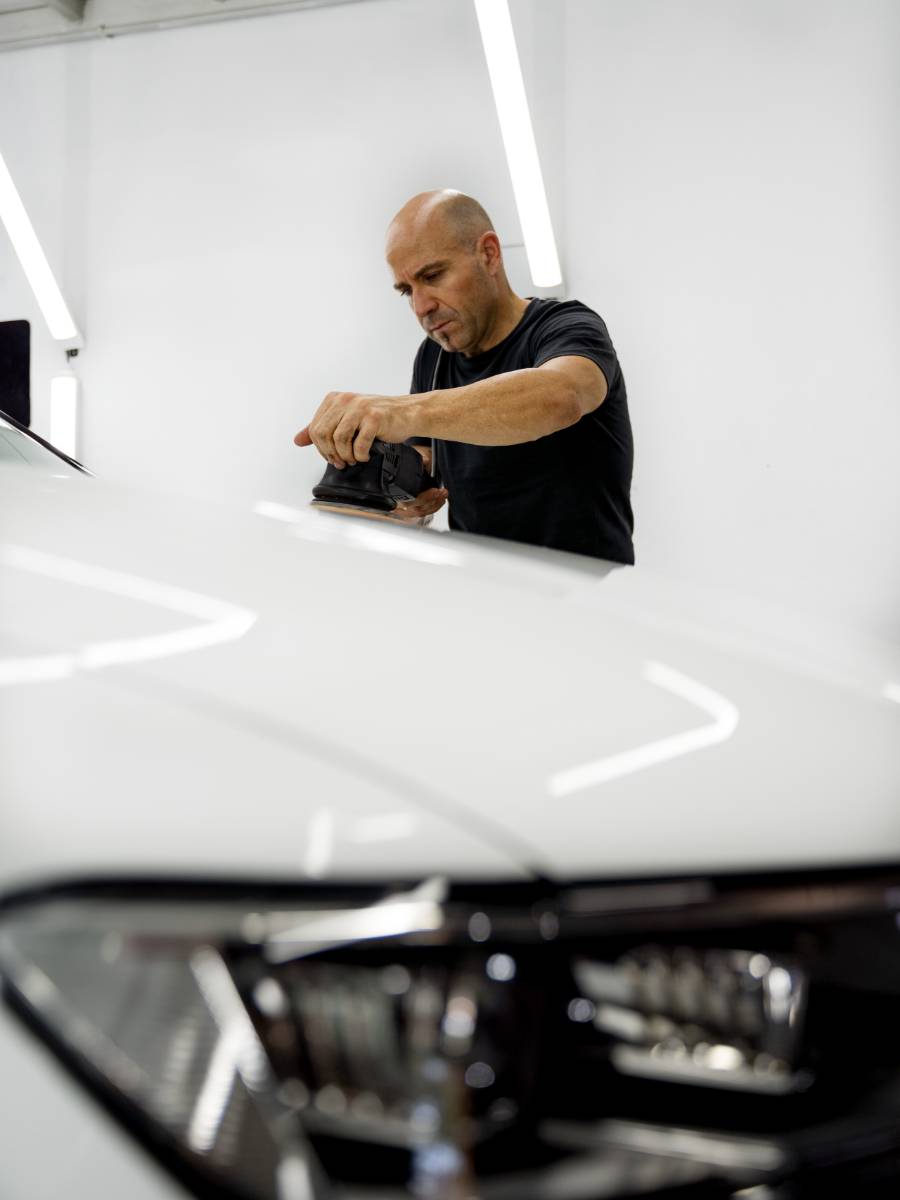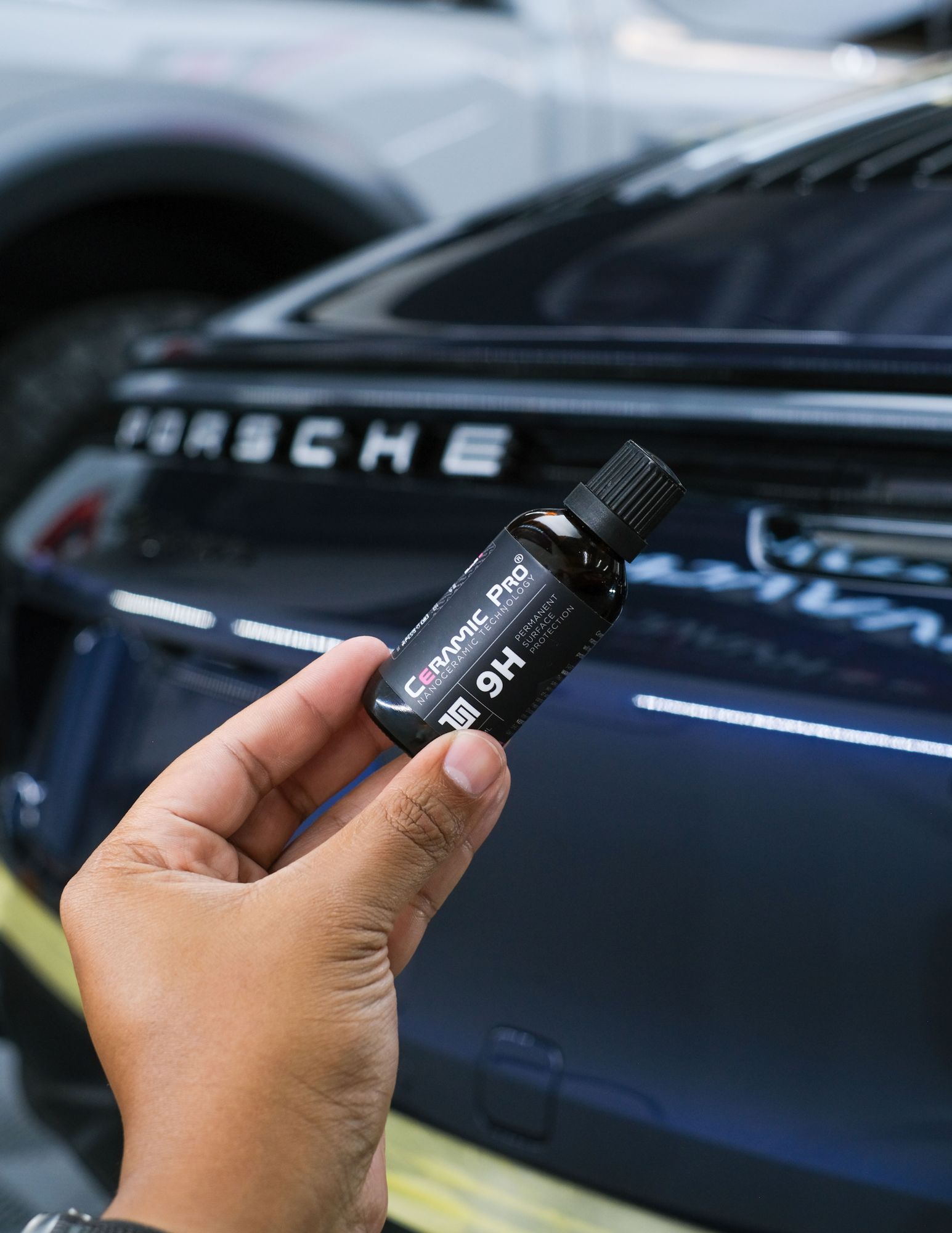Ceramic Coating vs Traditional Wax: Which Offers Better Protection?
Ceramic Coating vs Traditional Wax: Which Offers Better Protection?
Blog Article
Ceramic Coating vs. Traditional Wax: Which Offers Much Better Long-Term Protection?
The dispute in between ceramic layers and standard wax for car defense has actually gathered substantial interest among automobile fanatics and specialists alike. While both serve the objective of securing paint, their differences in durability, application, and lasting maintenance costs may affect a consumer's option. Ceramic coatings boast premium long life and resistance to ecological factors, yet the intricacy of their application questions regarding availability and practicality. As we discover these contrasting options, it becomes vital to think about not just the prompt benefits yet also the ramifications for vehicle care gradually.
Summary of Ceramic Layer
Ceramic covering has actually gotten significant popularity among auto fanatics and detailers alike as a result of its advanced protective top qualities. This innovative technology is designed to produce a resilient, hydrophobic shield over a lorry's paint surface area, substantially boosting its resistance to ecological contaminants such as dirt, UV rays, and chemical discolorations. Unlike standard wax, which supplies a short-lived layer of security, ceramic finishes bond at a molecular degree with the paint, offering resilient durability-- typically prolonging past two years with proper maintenance.
The application procedure entails careful prep work of the vehicle's surface, consisting of cleaning and brightening to ensure optimum bond. When used, the covering treatments to create a robust layer that not only includes depth and gloss to the paint but additionally simplifies upkeep. With its hydrophobic residential properties, ceramic finish permits water and dirt to slide off more easily, minimizing the regularity of cleans and decreasing the threat of swirl marks.
Additionally, ceramic coatings are offered in various formulations, enabling users to pick items tailored to their particular demands and choices. Overall, ceramic covering stands for a substantial development in paint security technology, providing premium performance contrasted to traditional alternatives.
Overview of Standard Wax
Commonly considered as a staple in auto care, wax serves as a preferred selection for those looking for a simple approach to enhance and shield their car's paint - ceramic coating. Automotive wax commonly consists of natural components, such as carnauba, or artificial substances, created to create a safety layer on the surface of the paint. This layer not only improves the automobile's gloss and shine but likewise offers a barrier against ecological contaminants
The application of wax is usually easy to use, making it obtainable for both professionals and DIY enthusiasts. When applied, wax needs a healing duration, after which it sets to form a safety covering.
Nevertheless, while wax is efficient for enhancing the visual charm of an automobile, it is very important to keep in mind that the protection it supplies might necessitate a lot more regular reapplication contrasted to alternate items, such as ceramic layers. Overall, conventional wax stays a favored option for those focusing on simplicity of usage and instant aesthetic renovation.
Toughness and Durability Comparison
While both ceramic finishings and traditional wax offer safety benefits for vehicle paint, their why not try these out sturdiness and longevity differ dramatically. Standard wax, usually made from all-natural carnauba or artificial polymers, typically supplies a safety layer that lasts approximately 3 to six months. This reasonably brief life-span demands regular reapplication to keep optimal protection.
On the other hand, ceramic coverings are crafted from sophisticated nanotechnology, forming a covalent bond with the paint surface area. This causes a durable, hydrophobic layer that can endure for two to 5 years, relying on the item and environmental problems. The premium longevity of ceramic finishes is attributed to their chemical framework, which supplies improved resistance to scrapes, UV rays, and oxidation.

Protection Against Environmental Aspects
Shielding a lorry's paint from ecological variables is critical for keeping its look and worth over time. Automobiles are frequently exposed to a selection of aspects, consisting of UV rays, bird droppings, tree sap, acid rainfall, and roadway crud, all of which can endanger the stability of the paintwork.
Ceramic finishings give a robust defense against these environmental assailants. Unlike traditional wax, which can weaken rapidly under UV direct exposure, ceramic coverings create a sturdy, hydrophobic layer that withstands the harmful impacts of sunlight and toxic wastes. This innovative innovation produces a chemical bond with the automobile's surface area, providing superior protection that lasts for many years, also in rough link problems.
In contrast, ceramic coatings preserve their safety top qualities much longer, dramatically decreasing the threat of paint damages and making certain that the lorry maintains its visual appeal. As an outcome, ceramic finishes are progressively acknowledged as the remarkable option for long-term protection against environmental elements.
Application and Maintenance Differences
The approaches of application and succeeding maintenance for ceramic coverings and conventional wax differ significantly, influencing the total individual experience and effectiveness of each item. Ceramic coatings need a more elaborate application process, usually including surface prep work that consists of cleaning, sanitizing, and polishing the vehicle. Once the surface is ready, the ceramic finish is applied in a regulated setting, frequently requiring expert knowledge to advice guarantee correct treating and bonding to the paint.

While both products improve lorry look, the longer-lasting protection provided by ceramic finishings might justify their preliminary investment, regardless of the even more demanding application process. On the other hand, traditional wax stays a prominent selection for those seeking a less complex, albeit temporary, service.

Final Thought
In conclusion, ceramic layers show significant advantages over conventional wax in regards to toughness and environmental management. With a life expectancy extending 2 to five years and exceptional resistance to UV rays, dust, and chemical spots, ceramic finishings supply a more effective remedy for lasting vehicle maintenance. The application process might require professional competence, the resulting price savings and minimized regularity of reapplication underscore the worth of ceramic finishings for those seeking ideal vehicle protection.
The argument between ceramic coverings and conventional wax for car defense has garnered significant focus amongst automobile lovers and professionals alike. Unlike typical wax, which gives a temporary layer of security, ceramic finishings bond at a molecular level with the paint, using resilient sturdiness-- usually prolonging past two years with correct upkeep.
While both ceramic finishings and standard wax offer protective benefits for vehicle paint, their resilience and durability vary substantially. For automobile fanatics looking for long-term defense, ceramic finishings offer an engaging advantage over traditional wax products.
In conclusion, ceramic finishings show substantial advantages over traditional wax in terms of toughness and ecological security.
Report this page